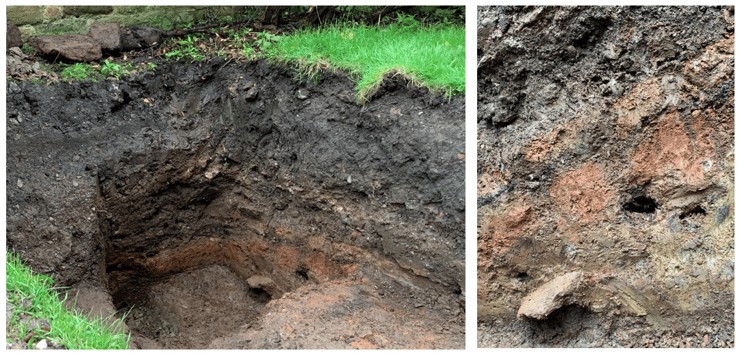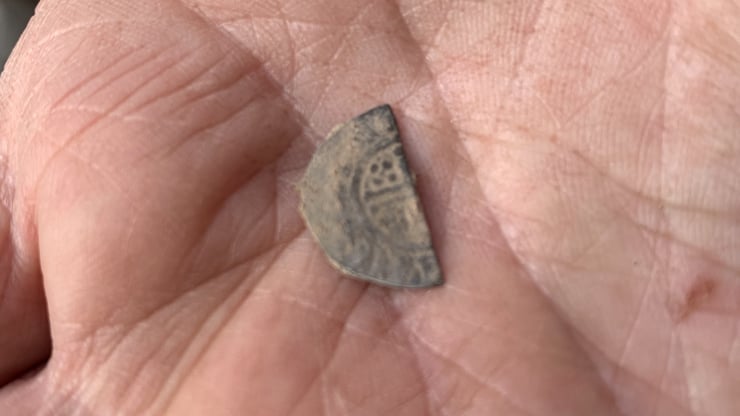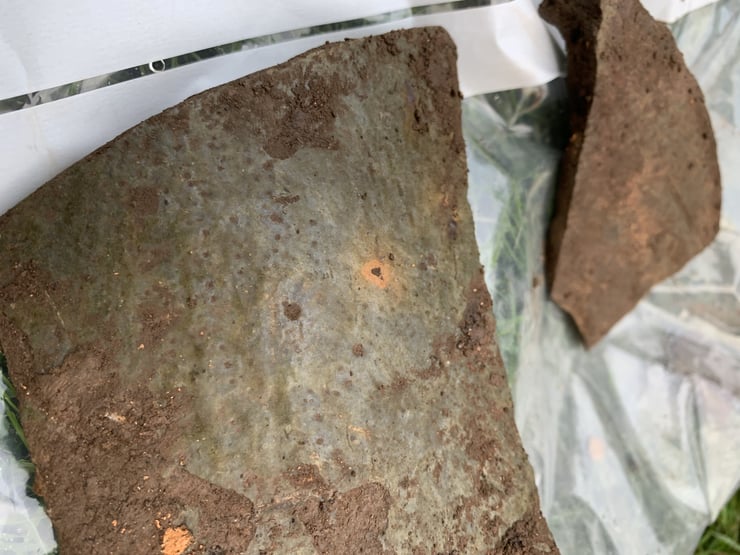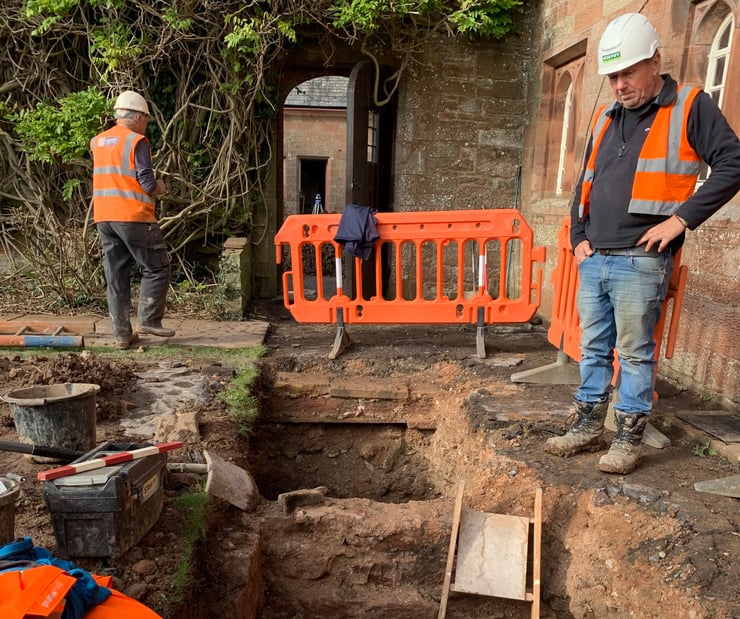As renovation on the site begins, a team of archaeologists have made some surprising discoveries about its warring past.
 Photo: Janet Queen
Photo: Janet Queen
For 800 years, Rose Castle was a border fortress and bishops' palace. High defensive walls, earthworks, and impenetrable towers were built in the thirteenth-century, when the region was a battleground between two powers: the Scots to the north; the English to the south.
During the centuries that followed, the castle belonged at times to the Scots, at others to the English. Home to the bishops of Carlisle, it was a symbol of power over a remote and rebellious land.
Now, in the twenty-first century, the castle is entering the next phase in its history. The Rose Castle Foundation is turning this story of conflict on its head, transforming Rose Castle into a global landmark for peace and reconciliation, welcoming those from both sides of a divide to live and learn together.
When renovation work started on the site in October 2019, a team of archaeologists were brought in to search for clues to the building's warring past. After less than a month of digging, here is what they have already found.
Burned earth and baked clay. The permanent scar of war?

When the archaeologists began digging into the clay, they assumed it was a natural build-up; the accumulation of centuries of chemical weathering. They soon found, however, that this clay was made up of several distinct layers - a clue to human intervention.
If you look closely at the pictures above, you will spot a thin, black line about one metre below the current surface. That line is the mark of charring: whatever had been on the surface was burnt. Below the black line, several inches of orange earth tell the next part of the story. What took place here was a "prolonged heating event". The very ground was on fire, possibly for days on end.
We already know that, in the fourteenth century, the Scots burned the castle to the ground on three separate occasions. What archaeologists have now discovered in the form of this thin, black line, and baked orange clay, might well be the physical scar of that conflict, etched into the ground under the castle.
The clay bank, the archaeologists tell me, probably predates the sandstone castle altogether. It was likely a human construction, part of a motte and bailey fort surrounded by a wooden fence, built in the early Norman era, and bequeathed to the church some centuries later.
A medieval half-coin, possibly older than the castle

In another dig, archaeologists found this half-coin, which they estimate to have been produced during the reign of Henry III (1216-1272). If this date is correct, then they will have found another piece of evidence that the castle site was inhabited before the first written records began. Alongside the coin, the team also found some of the oldest walls on the site.
"That straight line there", lead archaeologist Jerry tells me, "that’s called the mantle wall, and it was built in the fourteenth century". He is pointing at a line of pale red bricks jutting out from a hole in the garage. "The wall would have been three metres high. There would have been a moat on this side.
During the Civil War, when the castle was invaded again to the point of near total destruction, the moat was filled in.
"What they would do is salvage good stone, dressed stone, to use again. And they'd throw in all the rubbish. When you look at these things you always find lots of mortar, barrows of it chucked in. By the seventeenth century the moat would no longer have had a defensive function. But those walls down there are fourteenth century."
Green glazed ceramic pots: the height of fourteenth century fashion

When digging in the moat, archaeologists also found broken wine bottles, probably from the seventeenth or eighteenth century. Buried in the clay were green glazed ceramic pot shards, a type of high-quality tableware that was extremely fashionable in the fourteenth century.
The castle was not always and only a place of war and chaos; it was a site of prayer and hospitality, too. And it is these elements of its past that the Rose Castle Foundation seeks to reclaim. These discoveries are being made now because the castle is entering a new period in its history, as it is transformed into a space to reimagine, and a global landmark for peace and reconciliation.
It is precisely that newness that is leading us to uncover new knowledge about its ancient past, from the time in which it was a border fortress, designed to keep enemies out and dominate an rebellious landscape that was neither quite English nor Scottish.
"We are building oak trees, not cabbages", commented Prof David F Ford, co-chair of RCF's board of trustees, recently. And as we enter the next phase of this mission, we are discovering just how deep the roots of these oak trees already run.
